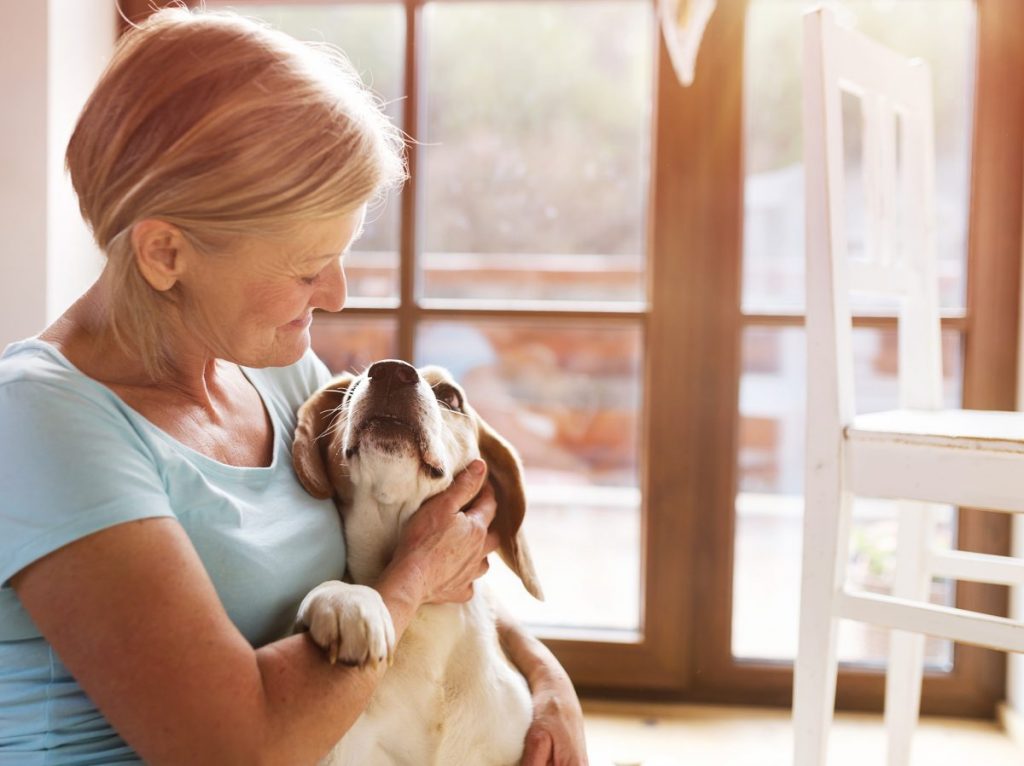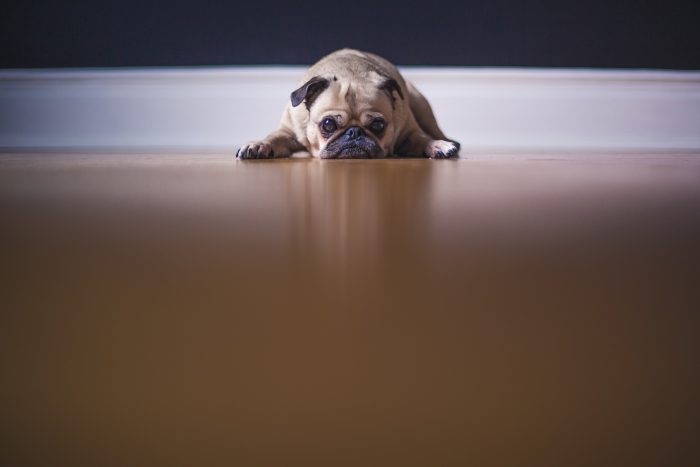Separation Anxiety: Identify The Warning Signs
As any dog parent knows, our four-legged friends are typically social creatures – and as a result, don’t enjoy being left alone at home. However, some canines display extreme cases of anxiety when their owners leave the house, including disruptive behavior and other symptoms indicating distress. Here are several signs that your furry companion may be suffering from separation anxiety:
- Indoor Accidents: Oftentimes, dogs will defecate or urinate inside when left unattended or separated from their guardian. If a dog relieves himself in the presence of his owner, his accidents are probably not caused by separation anxiety. Other classic signs of anxiety in dogs include diarrhea and coprophagia (defecating and consuming all/some of their excrement). Consult your veterinarian to discuss these conditions, as it may be medically or dietary-related.
- Persistent Barking: Some dogs will bark, howl or whine when separated from their owner. Usually persistent in nature, its sole trigger is being left alone and is indicative of severe anxiety.
- Destructive Behavior: Dogs are also known to express their emotional state in other ways, including destructive behavior – either to themselves or to your household’s surroundings. Some dogs will chew on objects other than their toys, including window sills and door frames; others may destroy objects in your home (i.e., tearing up throw pillows or upholstered furniture, etc.). In addition, your pet may lick and bite himself, which can lead to lesions, another symptom of anxiety.
- Attempting to Escape: If a dog is in a state of panic or anxiety, he may feel confined and compelled to escape. As a result, he may attempt to chew or dig through doorways or windows, which can result in self-injury (e.g., damaged nails, injured front paws, broken teeth, etc.). If your pet displays this behavior only when he’s separated from you, it is very likely that he is suffering from anxiety.
- Incessant Pacing: Another behavior indicative of anxiety is pacing – either walking back and forth in a straight line or in a circular pattern. Once again, if your pooch engages in this behavior when left alone, it can most likely be attributed to acute anxiety.
Helpful Tip: If you’re uncertain that your dog is exhibiting one or more of these signs/symptoms, place a video camera in the area where he spends the majority of his time. It’s a useful tool to assess his emotional state, especially when determining if you need to consult your vet to diagnose and treat severe cases of separation anxiety.
Why Does My Dog Experience Separation Anxiety?
Although there are many factors that can lead to separation anxiety in dogs, there is no singular answer to explain this phenomenon. Dogs that have grown up in a single residence since puppyhood are much less likely to develop separation anxiety.
Here are a few scenarios which may be associated with your pup’s anxiety:
- Change of Owner/Family: Separation anxiety is seen frequently in dogs that have been abandoned, placed in a shelter, or given to a new guardian.
- Change in Residence: Another anxiety trigger for dogs is a change in residence.
- Change in Schedule: Dogs are creatures of habit, and abrupt changes in their daily routine can lead to separation anxiety. For example, if you were a stay-at-home parent and then began working a nine to five job, your dog may develop separation anxiety as a result of the schedule change.
- Change in Household Members: In addition to change of location and schedule, the sudden absence of a resident or family member (either due to death or moving away) may also be a source of separation anxiety.
Although these are the primary situations linked to separation anxiety in dogs, it’s important to consider other reasons, such as illness, incomplete house training, juvenile destruction, and even boredom. Once you’ve ruled out any medical conditions with your vet, you may wish to resolve the problem using a number of different approaches to ease your dog’s anxiety. For severe cases, your veterinarian may prescribe medication; however, this is usually seen as a last resort – speak candidly with your vet and discuss all of your options first.
How to Treat Dogs with Mild to Severe Separation Anxiety
According to the ASPCA, counterconditioning may be a useful treatment for mild separation anxiety. For example, every time you leave your home, you can offer your pooch a puzzle toy stuffed with food – over time, your dog will associate your leaving the house with a delicious treat.
For dogs with moderate to severe separation anxiety, a more complex routine is required, known as desensitization. In these cases, you may wish to consult a Certified Applied Animal Behaviorist (CAAB or ACAAB) or a Certified Professional Dog Trainer (CPDT). The ASPCA’s article Finding Professional Behavior Help can help you locate a CPDT in your region. Discussing various behavior modification techniques and obtaining professional assistance has proven invaluable to many pet owners faced with an anxious dog.
Helpful Tip: Some dogs feel comfortable in crates when left alone; you may want to try this approach with your pup and see if it helps ease his anxiety. You may also want to consider a dog-sitter for extended periods of time.






